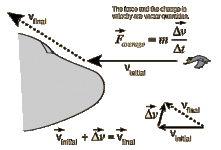The only time I use center ball is when I need it, usually a stop shot or straight draw, so not that often. Otherwise I aim outside the crease, even if it's an eyelash, I push in or out. It doesn't matter if it's a full hit or 90 degrees, I hit what the game asks me to do, or I will quit forever.
On cut shots I use whatever I need in order to control the cue ball. What good is cutting a ball and losing the cue ball. If I need to hit 3,4,5,6,7,8,9 o'clock that's what I hit, it's about cue ball control, it's just another shot.
If I had to cut a ball steep and not worry about the cue ball (Which is something I never do) I would favor inside.
If you can't hit center ball at will you have no business pushing to the sides. Different strokes for different folks.
Sincerely: SS
Those locations on the OB will yield different cut angles like fractions. I will look into what those angles are.
Thanks,
Be well.
Edit:
5:00 and 7:00 would be 1/4 OB an would yield a 15 degree cut angle.
4:00 and 8:00 would be ~1/10 OB and would yield a ~24 degree cut angle.
Last edited:
